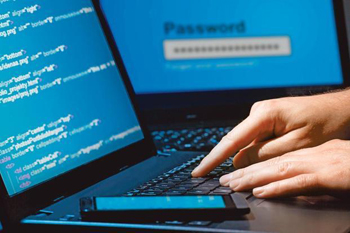Nov 21: Consumers who were victims of cybercrime within the past year often continued their unsafe behaviour, reveals the India findings from the 2016 Norton Cyber Security Insights Report.
 For example, while these consumers were equally likely to use the same password for every account, they were over twice as likely to share their password with others, said the annual report that was released on 17 November. Also, 79% of consumers know they must actively protect their information online, but they still share passwords and engage in other risky behaviour.
For example, while these consumers were equally likely to use the same password for every account, they were over twice as likely to share their password with others, said the annual report that was released on 17 November. Also, 79% of consumers know they must actively protect their information online, but they still share passwords and engage in other risky behaviour.
Also, close to one in five (18%) consumers have at least one unprotected device, leaving their other devices vulnerable to ransomware (malicious software that blocks access to a computer system until money is paid), malicious websites, zero days and phishing attacks.
While quoting various reasons for not protecting their devices, 36% said they don"t do anything “risky” online; 23% believed security measures would slow them down.
Among those surveyed, a vast majority (85%) of Indians have Wi-Fi in their homes. Proving that thinking about cybersecurity doesn"t mean you"re secure, people who experienced cybercrime within the past year were more likely to be concerned about the security of their home Wi-Fi network (79% vs. 70% non-victims), yet less likely to password-protect their home Wi-Fi network than non-victims (28% vs. 10% of non-victims have unprotected networks).
Only 56% of consumers knew how to determine whether the Wi-Fi network they are using is secure; this is of concern especially since 22% of respondents agreed to have used their neighbour"s Wi-Fi network without their permission, the report said. When it comes to public Wi-Fi, one in four (27%) regularly use public Wi-Fi connections available at places like airports and coffee shops.
Experiencing cybercrime is a potential consequence of living in a connected world, the report acknowledges but cautions that consumers are complacent about protecting their personal information online.
As many as 64% of consumers said that over the past five years, it"s become harder to stay safe online, compared to 60% who said the same of the real world.
According to the report, millennials exhibit surprisingly slack online security habits, and are happy to share passwords that compromise their online safety (34%).
This is likely why they remain the most common victims of cybercrime, with 55% having experienced cybercrime in the past year.
Consumers are still willing to click on links from senders they don"t know or open malicious attachments. One in three (33%) cannot detect a phishing attack. Among those surveyed, 65% of Indian consumers don"t believe there are enough connected device users for it to be a worthwhile target for hackers. Yet, 68% believe that just as hackers learnt to benefit from targeting social media and financial accounts, they are on their way to learning how accessing connected home devices can be lucrative.
Indians also rank high in terms of falling prey to ransomware, according to the report. One in three (33%) have either experienced ransomware or know someone who has; 83% of ransomware victims fell prey to it in the past one year alone, indicating a steady rise of this menace.





Comments
Add new comment